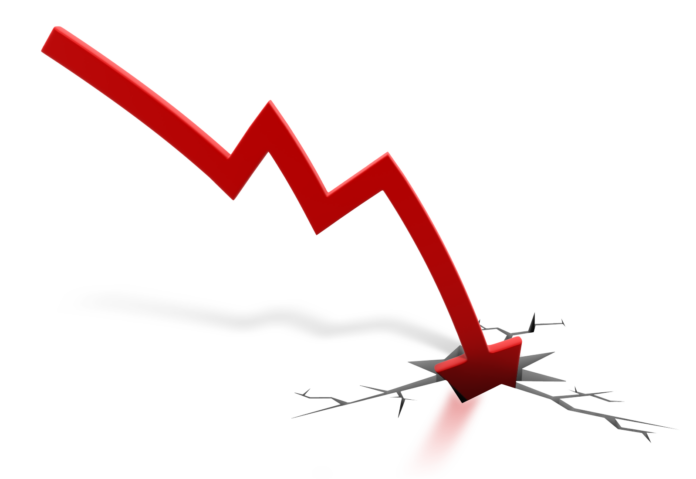In an unexpected mid-week market development, the stock market witnessed a decline as Wall Street shifted to a more cautious stance. This change in sentiment came on the back of a downgrade by Fitch Ratings of the long-term credit rating for the U.S., thereby putting a damper on the recent positive stride of the market.
The Dow Jones Industrial Average saw a slump, shedding 242 points, which amounted to a 0.7% decrease. Concurrently, the S&P 500 experienced a pullback of 1.4%, while the Nasdaq Composite retracted by 2.4%.
Fitch Ratings, in an announcement on Tuesday night, lowered the U.S.’s long-term foreign currency issuer default rating. This downgrade from AAA to AA+ was primarily driven by the “expected fiscal deterioration over the next three years.”
This downgrade sparked a flurry of debate among Wall Street analysts, creating a divide over its implications for stocks and the subsequent market sell-off.
Senior investment strategist at Edward Jones, Mona Mahajan, opined, “Investors may use this Fitch downgrade as a reason to take some profits, but we think that was probably a natural part of the market cycle anyway, after such a strong run, very little volatility. This hasn’t altered our fundamental view of the economy or markets.”
Paris-based IG Markets’ chief market analyst, Alexandre Baradez, voiced a contrasting perspective, stating, “Rather than the Fitch downgrade, I suspect that what’s currently being priced is the growing risk of an economic slowdown. The downward trend started to emerge yesterday on the back of disappointing Chinese and US data, which suggests it’s not really about the rating downgrade, but rather the risk of a slowdown.”
JPMorgan’s Market Intel team picked up on this sentiment, expressing that while “the global sell-off may be blamed on the US Debt Downgrade, this appears to be more tied to de-risking into a seasonally soft patch for the market ahead of Fed-induced uncertainty.” Mike Gormley, a trader at JPM, attributed the selloff to several reasons including the typical poor market seasonality in August, the lack of market catalysts until the Jackson Hole Symposium on August 24, and unique drivers such as Japanese selling before OBON holidays, disappointing Chinese economic data, and weak cyclicals post-US ISM data.
However, not all analysts foresee gloom and doom in the wake of the downgrade. Goldman’s chief economist, Jan Hatzius, counters that the downgrade “should have little direct impact on financial markets as it is unlikely there are major holders of Treasury securities who would be forced to sell based on the ratings change.” He emphasized that the downgrade contains no new fiscal information, that Fitch’s projections are similar to Goldman’s, and that there are no meaningful holders of Treasury securities who would be compelled to sell due to a downgrade.
Hatzius also pointed out that Fitch did not adjust its “country ceiling”, thereby not affecting securities issued by U.S. entities. He underscored that the downgrade should not have any implications for securities issued by government-sponsored entities (GSEs), nor for municipal issuers.
In a less optimistic take, Mark Cudmore, a former Lehman trader and currently a Bloomberg Market Live commentator, expressed that while it may be possible to downplay the impact of the ratings agency’s move in the short-term, it still is a negative factor for Treasuries in the long run.
Cudmore referred to historical performance trends to back his claim, stating that while Treasuries rallied for two weeks post the 2011 downgrade, it was followed by a peak in total returns that lasted for over a year. In his view, the downgrade was a clear indicator for the end of the multi-year Treasuries bull market and the commencement of an era of underperformance.
Amid these mixed opinions, what became evident was the ascent of the dollar amidst broad risk aversion, with yields also rising, not due to the downgrade but rather due to the Treasury/TBAC forecasting an explosion in debt issuance in the forthcoming years.
Ultimately, the ramifications of the downgrade and subsequent market responses were multifaceted. Even as some analysts held that the downgrade would have limited impact, the market reaction was significantly worse, leading to yields shooting up, not primarily on Fitch’s downgrade but largely due to the projection of a significant increase in debt issuance in the near future. The 10-year Treasury yield, in fact, soared to a new 2023 high of 4.12%, a level that could further strain the overall market.
The last time the 10-year reached above 4.00%, the Nasdaq sold off sharply prior to a fierce short-squeeze. Will history repeat itself?
Maybe. But with stocks still looking very overbought, it seems probable that there will be additional downside prior to the next recovery.








